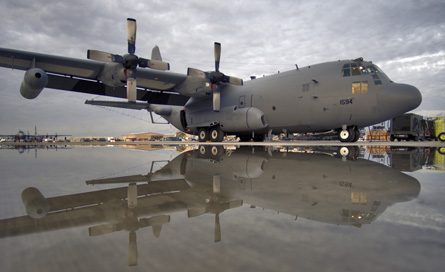The US Air Force has revealed that its primary airborne electronic attack platform, the Lockheed Martin EC-130H Compass Call, is under review by a fleet viability board.
The board's members will determine by January how the airframes of the 14-aircraft fleet have held up after nearly a decade of hyper-activity, says Col Stephen Brown, chief of electronic warfare requirements.
The USAF's primary system for jamming communications systems has been in high demand in Afghanistan and Iraq, possibly for disrupting the comparatively primitive command and control networks of insurgents and jamming the triggering devices for improvised explosive devices.
 |
|---|
© Master Sgt Lance Cheung/US Air Force |
The Compass Call fleet has operated at a rate 2.5 times greater than planned, Brown says. But it is not clear if any major concerns prompted USAF officials to call for the fleet viability board review.
"I'm not gong to say it was a worry or a concern," Brown says.
The results of the review will be closely scrutinised by the joint community. The Compass Calls are not only in high demand in current operations, but are the primary aerial weapon for jamming or disrupting enemy communications in a "near-peer" conflict.
Moreover, the Compass Call's future viability is a hot issue within the USAF. By default, the EC-130H fleet now stands as a pillar of the USAF's airborne electronic attack strategy, following the final demise of a plan to convert some Boeing B-52 bombers into stand-off broadband signals jammers.
If the viability review finds any problems, the USAF could be faced with an unplanned, and expensive, repair or replacement bill. Service officials have previously stated that WC-130s or TC-130s, or both, could be converted into EC-130Hs if the demand required it.
The US Navy is also starting to field its own communications jamming system, with its Boeing EA-18G Growlers carrying the Raytheon ALQ-227 communications countermeasures set.
The US Army also appears interested in creating a similar capability by repackaging the ALQ-227 into a jamming pod that can be carried by unmanned aircraft systems such as the General Atomics MQ-1C Sky Warrior.
Source: Flight International



















